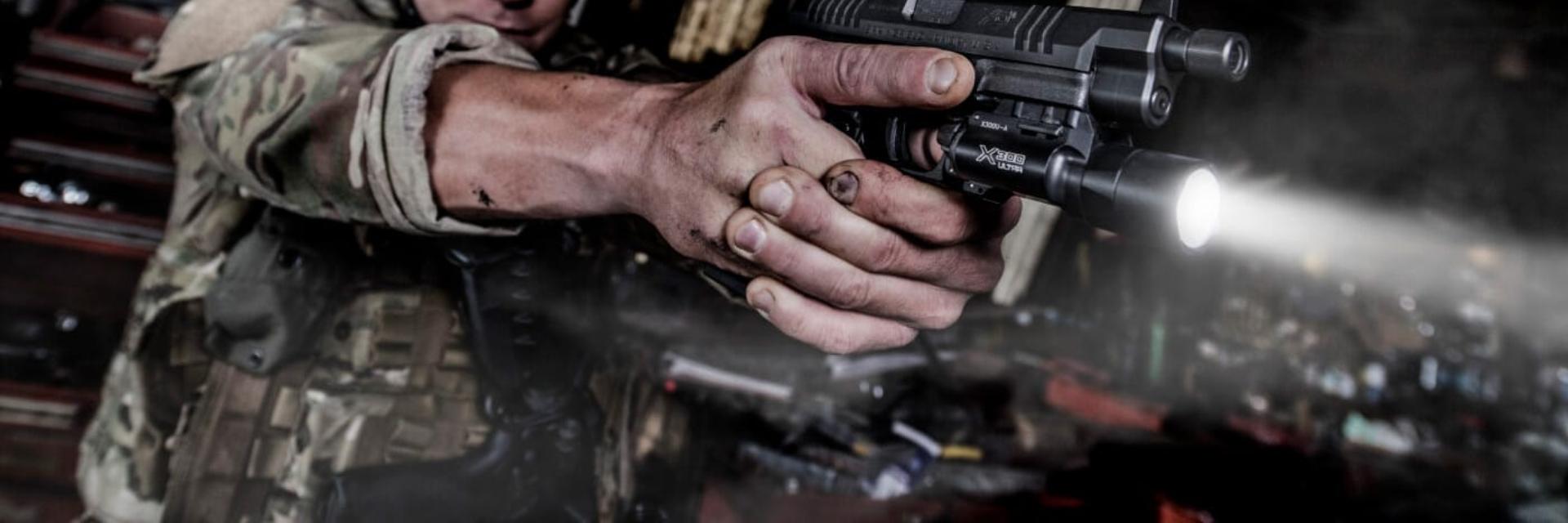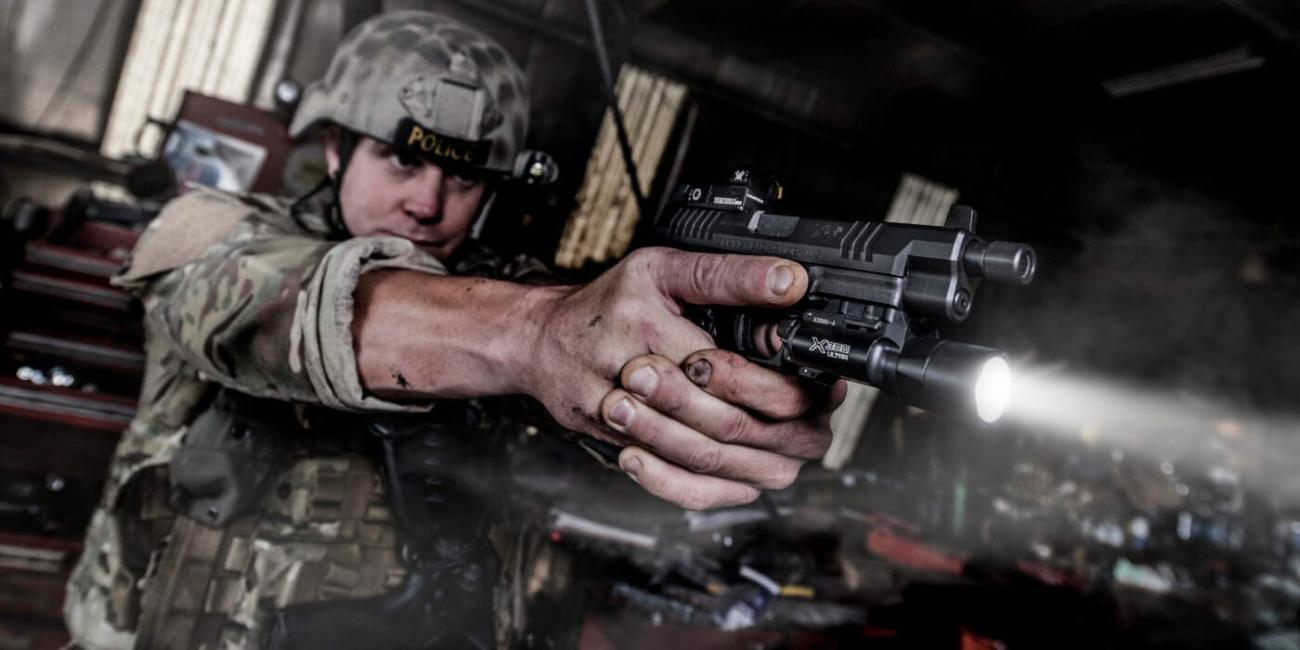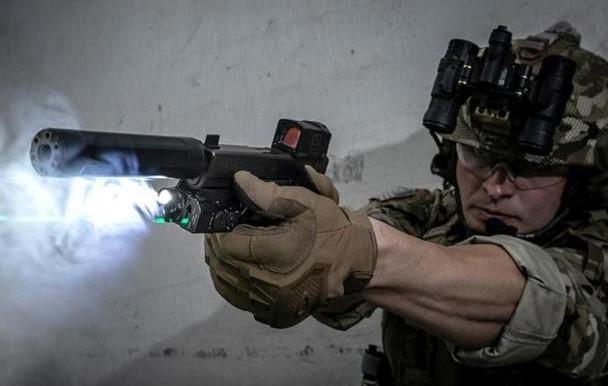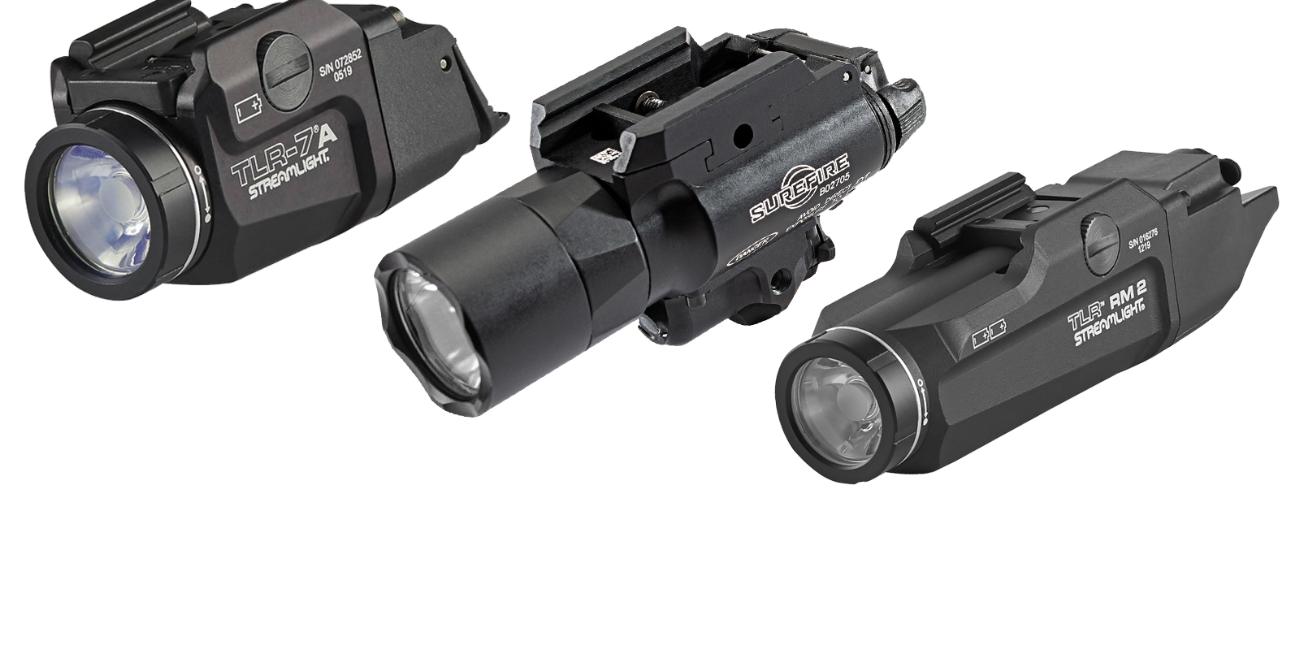
A Weapon Light Primer
Kiesler Police Supply 3/7/2025 12:00:00 AMIf there’s one single shooting attachment that’s necessary on a duty weapon, particularly a handgun (besides a red dot or some other optic) it’s a weapon mounted light, also known as a WML or just a weapon light.
This short guide will help you understand some of the terminology associated with them so that you can better understand what you’re looking at in terms of features.
But first, an intro to the utility of a weapon light.

Why Weapon Lights Are Essential for Duty
There is a saying in this industry, “what you can’t see can kill you,” and it is unfortunately true.
Weapon lights serve a variety of purposes. Not only can they be used for general utility, they can eliminate photonic barriers, allow an operator to see more clearly through muzzle smoke, and make a PID (positive ID) of any potential target, even under adverse conditions, up to and including in complete darkness.
A full post could be written on the necessity of weapon mounted lights for duty use, but for the purposes of this guide these should suffice.
So let’s take a look at the gun lights themselves.
Construction
First, consider the construction of the gun light itself. Most are made with high-density polymers or aluminum. Polymers are corrosion and moisture resistant but they tend to be heavier than aluminum. Aluminum, in addition to being lighter, is generally stronger and more wear resistant. Take this on a case-by-case basis.
Activation Method
Most weapon lights are activated by a switch, either on the side of the light body or on the tailcap, though some may activate via a remote switch. Some may also have a lever while others have a tape switch. Some may even feature negligent discharge protection which help prevent accidentally draining the battery when the light is not in use.
Output Rating: Lumens, Lux, Candela
Probably the most important feature for you to evaluate in any weapon-mounted light is the output, the three most important aspects of which are metrics known as lumens, lux and candela.
Lumens are the raw light output of the emitter, so technically, the higher the lumens, the brighter the light. However, lumens alone don’t tell the entire picture as they don’t give an accurate impression of how focused the beam is.
For that, you need candela rating, which expresses how focused the beam is. Lights with a higher candela ratings can shine through photonic barriers more effectively, and will send a spot or beam of light much farther than those with lower candela ratings. To give a specific example involving a common photonic barrier, higher candela would allow a beam of light to penetrate a vehicle window tint better than higher lumens.
Lux is sort of like candela and refers to how many lumens you have per a certain area, so the higher the lux, the brighter the beam of light is. All in all, you want higher figures for lumens, lux and candela. Many weapons lights only offer two, though, either lumens and lux or lumens and candela, since lux and candela are similar.
Two other terms you need to understand with respect to tactical lights are spill and throw. Spill refers to how wide the beam is; there are two general types of spill, which are spotlights and floodlights. Spotlights project a concentrated beam whereas floodlights cast light over a wide area, hence the name.
Throw refers to the effective distance of a light beam, so the greater the throw, the farther off you will be able to establish a positive target identification.
Battery Type and Life
While there are some gun lights that accept disposable batteries, like CR123 batteries, the majority likely take rechargeable lithium-ion batteries.
These batteries are lightweight and offer a high discharge rate, making them perfect for duty use.

IP Rating
Many weapon lights are given an IP, or “ingress protection” rating, which is labelled as IPXX, with the two X’s being replaced by numbers, the first of which connotes the level of protection against particulate matter and the second against moisture.
The higher the rating, the better, as the system will be sealed off to both particulate matter and moisture that can cause shorts. Some weapon lights have completely sealed internal circuitry so it doesn’t matter even if dust or moisture does get in.
Impact Rating
Impact rating is another thing to look for in a weapon-mounted light, as the higher the impact rating the more physically durable the light will be, and the better it will be able to tolerate the stress of impact, either from incidental contact or from being dropped.
Other Settings/Features
Most weapon-mounted lights have constant on functionality, and may have multiple modes of brightness. Others may have a strobe feature or a kill switch that will enable a user to immediately kill the light, restoring darkness and help keep an operator’s position concealed.
Mounting Interface
How you mount the weapon light to the platform also matters. Many are made for compatibility with Picatinny rails, and it is likely that the majority of weapon mounted lights have Pic rail mounts. However, there are some that have M-LOK or KeyMod mounting interfaces or compatibility. Either way, you need to ensure that the weapon light in question is compatible with your platform or you will need to get a mount adapter.

Top Brands in Weapon Mounted Lights
There are many quality brands in weapon lights, among which are Surefire weapon lights and Streamlight weapon lights, both of which we carry and about which you can learn more at the previous link. If you have any questions about weapon lights in general, the brands we represent, availability, or pricing, get in touch with us directly and we would be more than happy to help.